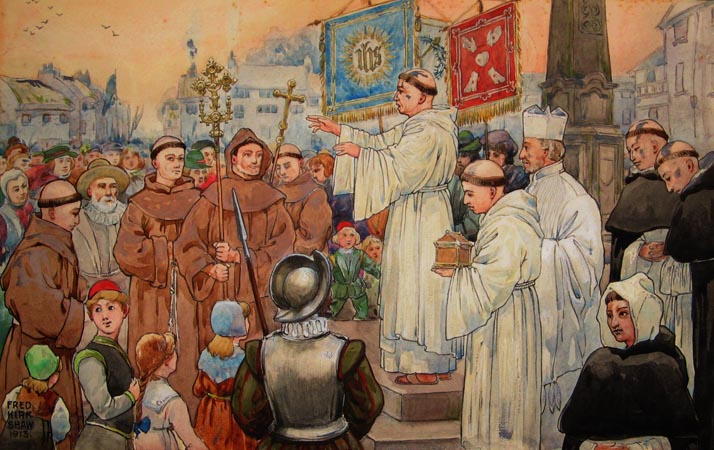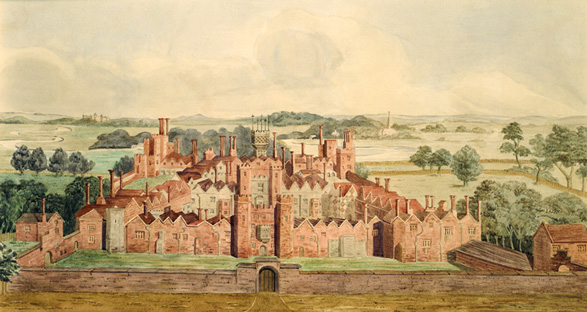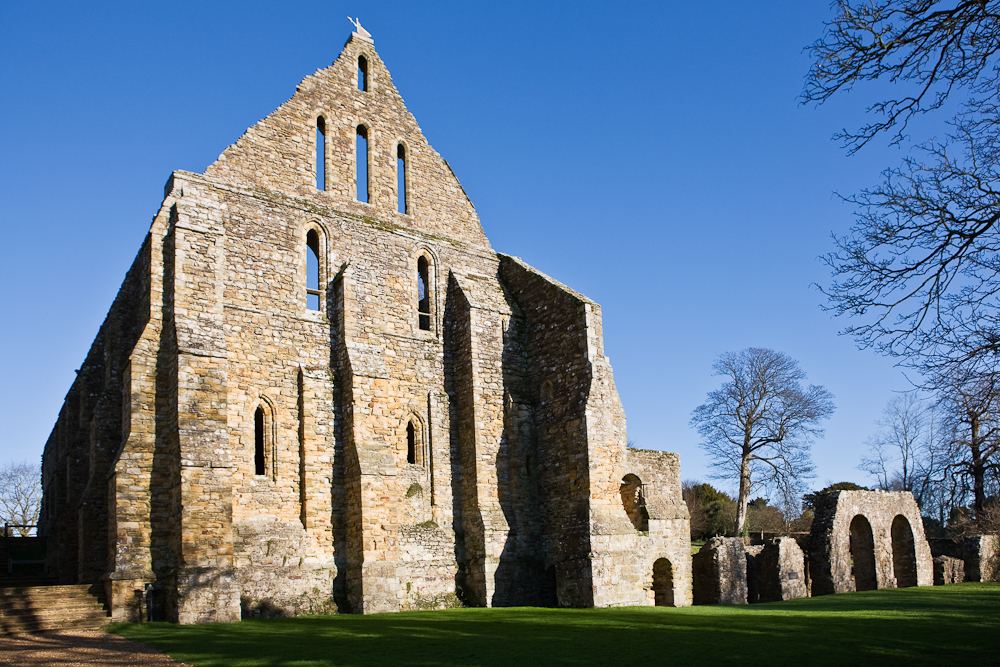|
Anthony Browne (died 1548)
Sir Anthony Browne, KG (c. 1500Bindoff. ''The History of Parliament: the House of Commons 1509–1558,'' ed. S.T. Bindoff, 1982'BROWNE, Sir Anthony (c.1500–48), of Battle Abbey and Cowdray Park, Suss.'/ref> – 6 May 1548) of Battle Abbey and Cowdray Park, both in Sussex, England, was a Member of Parliament and a courtier who served as Master of the Horse to King Henry VIII. Origins He was the son and heir of Sir Anthony Browne (died 1506) "the Elder", Standard Bearer of England and Governor of Queenborough Castle in Kent, by his wife Lucy Neville, the widow of Sir Thomas Fitzwilliam of Aldwark and a daughter of John Neville, 1st Marquess of Montagu and Isabel Ingaldsthorpe. The younger Anthony was, therefore, a younger half-brother of William Fitzwilliam, 1st Earl of Southampton. Career Anthony Browne's recorded royal services began in 1518, when he was appointed surveyor and master of hunting for the Yorkshire castles and lordships of Hatfield, Thorne, and Conisbrough. ... [...More Info...] [...Related Items...] OR: [Wikipedia] [Google] [Baidu] |
Pilgrimage Of Grace
The Pilgrimage of Grace was a popular revolt beginning in Yorkshire in October 1536, before spreading to other parts of Northern England including Cumberland, Northumberland, and north Lancashire, under the leadership of Robert Aske. The "most serious of all Tudor period rebellions", it was a protest against Henry VIII's break with the Catholic Church, the dissolution of the lesser monasteries, and the policies of the King's chief minister, Thomas Cromwell, as well as other specific political, social, and economic grievances. Following the suppression of the short-lived Lincolnshire Rising of 1536, the traditional historical view portrays the Pilgrimage as "a spontaneous mass protest of the conservative elements in the North of England angry with the religious upheavals instigated by King Henry VIII". Historians have observed that there were contributing economic factors. Prelude to revolt The 16th century During the Tudor era there was a general rise in the population ac ... [...More Info...] [...Related Items...] OR: [Wikipedia] [Google] [Baidu] |
Elizabeth Fitzgerald
Elizabeth Fitzgerald may refer to: *Elizabeth FitzGerald, Countess of Lincoln (1527–1590), also known as The Fair Geraldine, Irish noblewoman and member of the FitzGerald dynasty *Elizabeth Grey, Countess of Kildare (born 1497), English noblewoman, and the second wife of Irish peer Gerald FitzGerald, 9th Earl of Kildare *Duffy Ayers Betty Mona Desmond Ayers (née FitzGerald; 19 September 1915 – 10 November 2017), known as Duffy Ayers, was an English portrait painter. She was known for most of her life by the nickname "Duffy". Born in Great Missenden, Buckinghamshire, one o ... (1915–2017), English portrait painter * Elizabeth Fitzgerald (volleyball) (born 1980), American volleyball player {{hndis, Fitzgerald, Elizabeth ... [...More Info...] [...Related Items...] OR: [Wikipedia] [Google] [Baidu] |
Oatlands Palace
Oatlands Palace is a former Tudor and Stuart royal palace which took the place of the former manor of the village of Oatlands near Weybridge, Surrey. Little remains of the original building, so excavations of the palace took place in 1964 to rediscover its extent. Palace Much of the foundation stone for the palace came from Chertsey Abbey which fell into ruins after the Dissolution of the Monasteries. Henry VIII came to Oatlands on a progress in September 1514 and hunted stags on Chertsey Meads. He acquired the house in 1538, and rebuilt it for Anne of Cleves. The palace was built around three main adjoining quadrangular courtyards covering fourteen hectares and utilising an existing 15th-century moated manor house. A bed made for Anne of Cleves was described in an inventory of Oatlands. "Quene Annes bedd" had curtains of crimson cloth of gold and cloth of silver decorated with borders of purple velvet on the seams. It featured 108 embroidered badges of Anne and Henry ... [...More Info...] [...Related Items...] OR: [Wikipedia] [Google] [Baidu] |
Tudors
The House of Tudor was a royal house of largely Welsh and English origin that held the English throne from 1485 to 1603. They descended from the Tudors of Penmynydd and Catherine of France. Tudor monarchs ruled the Kingdom of England and its realms, including their ancestral Wales and the Lordship of Ireland (later the Kingdom of Ireland) for 118 years with six monarchs: Henry VII, Henry VIII, Edward VI, Jane Grey, Mary I and Elizabeth I. The Tudors succeeded the House of Plantagenet as rulers of the Kingdom of England, and were succeeded by the House of Stuart. The first Tudor monarch, Henry VII of England, descended through his mother from a legitimised branch of the English royal House of Lancaster, a cadet house of the Plantagenets. The Tudor family rose to power and started the Tudor period in the wake of the Wars of the Roses (1455–1487), which left the main House of Lancaster (with which the Tudors were aligned) extinct in the male line. Henry VII succeeded in pr ... [...More Info...] [...Related Items...] OR: [Wikipedia] [Google] [Baidu] |
Yorkist
The House of York was a cadet branch of the English royal House of Plantagenet. Three of its members became kings of England in the late 15th century. The House of York descended in the male line from Edmund of Langley, 1st Duke of York, the fourth surviving son of Edward III. In time, it also represented Edward III's senior line, when an heir of York married the heiress-descendant of Lionel, Duke of Clarence, Edward III's second surviving son. It is based on these descents that they claimed the English crown. Compared with its rival, the House of Lancaster, it had a superior claim to the throne of England according to cognatic primogeniture, but an inferior claim according to agnatic primogeniture. The reign of this dynasty ended with the death of Richard III of England at the Battle of Bosworth Field in 1485. It became extinct in the male line with the death of Edward Plantagenet, 17th Earl of Warwick, in 1499. Descent from Edward III Edmund of Langley, 1st Duke of Yo ... [...More Info...] [...Related Items...] OR: [Wikipedia] [Google] [Baidu] |
Cowdray House
Cowdray House consists of the ruins of one of England's great Tudor houses, architecturally comparable to many of the great palaces and country houses of that time. It is situated in the Parish of Easebourne, just east of Midhurst, West Sussex standing on the north bank of the River Rother. It was largely destroyed by fire on 24 September 1793, but the ruins have nevertheless been Grade I listed. Manor House The original fortified manor house was built between 1273 and 1284 by Sir John Bohun across the river from the town of Midhurst. He named it ''Coudreye'', the Norman word for the nearby hazel woods. 16th century In the 1520s, Sir David Owen, uncle to Henry VII, began construction of the current Cowdray House on the site of the former home Coudreye, which he had acquired upon the death of his wife Mary Bohun in 1496. In 1529, Sir David's son, Henry, sold the estate of Cowdray to Sir William Fitzwilliam. In 1533 Henry VIII granted a licence to Fitzwilliam's trustees ... [...More Info...] [...Related Items...] OR: [Wikipedia] [Google] [Baidu] |
The Crown
The Crown is the state in all its aspects within the jurisprudence of the Commonwealth realms and their subdivisions (such as the Crown Dependencies, overseas territories, provinces, or states). Legally ill-defined, the term has different meanings depending on context. It is used to designate the monarch in either a personal capacity, as Head of the Commonwealth, or as the king or queen of their realms (whereas the monarchy of the United Kingdom and the monarchy of Canada, for example, are distinct although they are in personal union). It can also refer to the rule of law; however, in common parlance 'The Crown' refers to the functions of government and the civil service. Thus, in the United Kingdom (one of the Commonwealth realms), the government of the United Kingdom can be distinguished from the Crown and the state, in precise usage, although the distinction is not always relevant in broad or casual usage. A corporation sole, the Crown is the legal embodiment of ex ... [...More Info...] [...Related Items...] OR: [Wikipedia] [Google] [Baidu] |
Battle Abbey
Battle Abbey is a partially ruined Benedictine abbey in Battle, East Sussex, England. The abbey was built on the site of the Battle of Hastings and dedicated to St Martin of Tours. It is a Scheduled Monument. The Grade I listed site is now operated by English Heritage as 1066 Battle of Hastings, Abbey and Battlefield, which includes the abbey buildings and ruins, a visitor centre with a film and exhibition about the battle, audio tours of the battlefield site, and the monks' gatehouse with recovered artefacts. The visitor centre includes a children's discovery room and a café, and there is an outdoor-themed playground. The triple light window depicting the life of St John and the crucifixion of Jesus is claimed to have once adorned Battle Abbey which dates from 1045, removed during the Cromwell era to protect it from destruction. The legend goes that it was hidden for many years until it was transported to Tasmania to be fitted to the eastern end of the Buckland Church.� ... [...More Info...] [...Related Items...] OR: [Wikipedia] [Google] [Baidu] |
Greenwich Palace
Greenwich ( , ,) is a town in south-east London, England, within the ceremonial county of Greater London. It is situated east-southeast of Charing Cross. Greenwich is notable for its maritime history and for giving its name to the Greenwich Meridian (0° longitude) and Greenwich Mean Time. The town became the site of a royal palace, the Palace of Placentia from the 15th century, and was the birthplace of many Tudors, including Henry VIII and Elizabeth I. The palace fell into disrepair during the English Civil War and was demolished to be replaced by the Royal Naval Hospital for Sailors, designed by Sir Christopher Wren and his assistant Nicholas Hawksmoor. These buildings became the Royal Naval College in 1873, and they remained a military education establishment until 1998 when they passed into the hands of the Greenwich Foundation. The historic rooms within these buildings remain open to the public; other buildings are used by University of Greenwich and Trinity Laban Con ... [...More Info...] [...Related Items...] OR: [Wikipedia] [Google] [Baidu] |
Anne Of Cleves
Anne of Cleves (german: Anna von Kleve; 1515 – 16 July 1557) was Queen of England from 6 January to 12 July 1540 as the fourth wife of King Henry VIII. Not much is known about Anne before 1527, when she became betrothed to Francis, Duke of Bar, son and heir of Antoine, Duke of Lorraine, although their marriage did not proceed. In March 1539, negotiations for Anne's marriage to Henry began, as Henry believed that he needed to form a political alliance with her brother, William, who was a leader of the Protestants of western Germany, to strengthen his position against potential attacks from Catholic France and the Holy Roman Empire. Anne arrived in England on 27 December 1539 and married Henry on 6 January 1540, but after six months, the marriage was declared unconsummated and, as a result, she was not crowned queen consort. Following the annulment, Henry gave her a generous settlement, and she was thereafter known as ''the King's Beloved Sister''. Remaining in England, ... [...More Info...] [...Related Items...] OR: [Wikipedia] [Google] [Baidu] |




.jpg)


